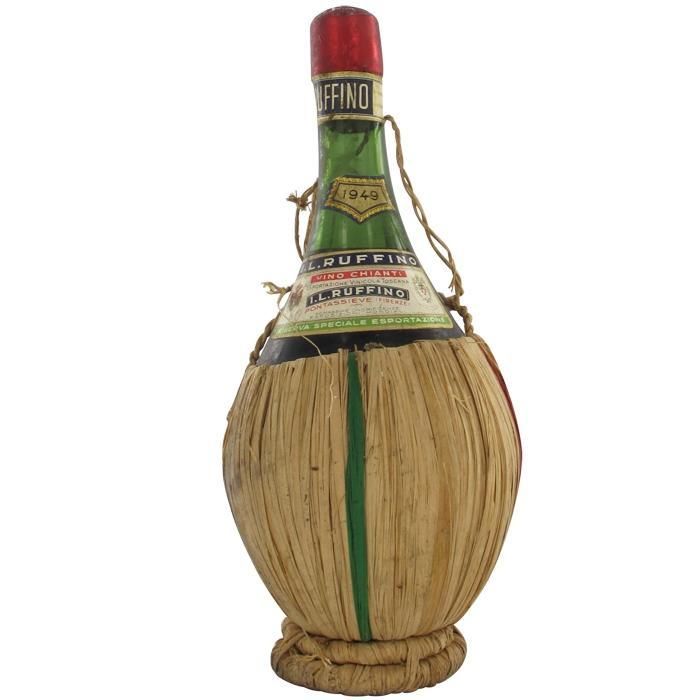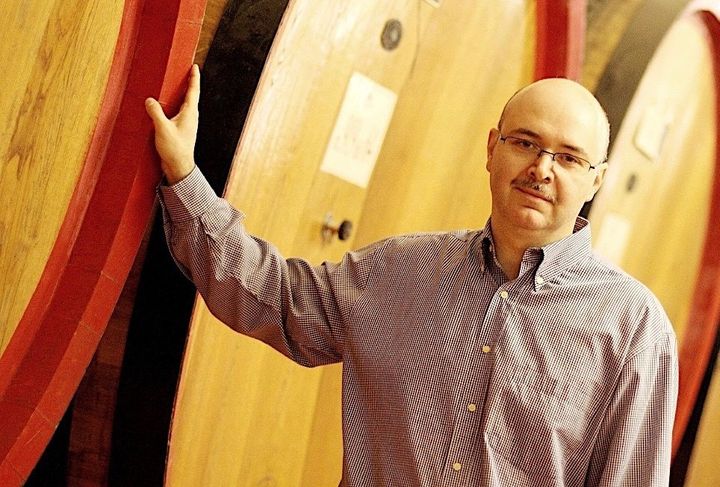
More than once I’ve been asked, if I could drink only one wine, what would it be? Assuming the query does not mean the last wine before the firing squad (that would be a double magnum of Romanée-Conti), I answer as if I were going to be stranded on a deserted island for a long time, in which instance, the wine I would hope might wash up on shore would be a case of Chianti Classico from a fine producer like Ruffino.
For, although Chianti may not be the best match for the fish that swim around my little island, it is without doubt one of the most versatile wines in the world, with a generous balance of fruit and acid and a characteristic earthiness underpinning its light tannins.

Chianti used to be so simple. It was the pizza wine you bought in a green bottle in a straw (later plastic) basket called a fiasco. Even if it wasn’t all that good, you could always use the bottle afterwards as a candleholder.
It was the wine on the table of every movie scene set in an Italian restaurant, even the romantic dogs’ dinner in “Lady and the Tramp.” But that plonky image has been outdated for quite some time.
Starting in the 1970s, well-heeled, market savvy producers like Ruffino, Antinori and Frescobaldi upgraded not just their own image but that of all Chiantis in Tuscany, helping the entire region obtain the prestigious D.O.C.G. appellation from the Italian government in 1996, guaranteeing high quality along with strict standards for making the wines. The Classico regional consortium, founded in 1924 with 33 members, now has more than 600 producers.
Chianti Classico must now be made with a minimum of 80 percent Sangiovese grapes, based on modern, healthier clones, with up to 20 percent other grapes allowed. Beginning in 2005 the long tradition of blending in inferior Trebbiano and Malvasia grapes was no longer permitted. Also, the old “governo” process, by which unfermented grape juice is added to young wines to restart fermentation in order to make the wines marketable at an earlier date, is now very rarely done anywhere.

Today Chiantis are fuller, richer, with more alcohol. Still, they have not been able to achieve the reputation of other Sangiovese-based Tuscan wines like Brunello di Montalcino, Vino Nobile di Montepulciano, and, increasinlgy, Chianti Classico.
“The so-called ‘Super Tuscans’ pushed Chianti aside in the 1980s,” says Gabriele Tacconi, Chief Winemaker at Ruffino, referring to the wholly unofficial marketing term for the region’s red wines not made according to the D.O.C.G. rules. “It’s my job to put us on an equal footing with wines like Sassicaia and Ornellaia, which use a lot of Cabernet Sauvignon. But in the higher altitudes of the Chianti region, except for Bolgheri, you should be careful in using Cabernet.” (Ruffino has made its own highly regarded “Super Tuscan,” named Modus, since 1997.)
I spoke with Tacconi (above) in New York at The Modern restaurant over a dinner that was decidedly not Italian—warm foie gras tart, white asparagus with trout roe, lamb with Israeli couscous—but the Ruffino wines showed very well, including a remarkably youthful Riserva Ducale Oro 1999 vintage of enormous charm and a 2005 Greppone Mazzi di Brunello di Montalcino with interesting licorice notes.
Tacconi, who speaks impeccable English, told me 2017 is the 140th anniversary of Ruffino, founded by Leopoldo and Ilario Ruffino, and he is only the estate’s third winemaker. This is also the 90th anniversary of the iconic Riserva Ducale and the 70th anniversary of Riserva Ducale Oro (Gold Label). The name derives from when, in 1890, the Duke of Aosta was so impressed by the Ruffino wines that he appointed the estate as the official supplier to the Italian royal family; in 1927 Ruffino returned the honor by naming their best wine Riserva Ducale. In time Ruffino became the first Chianti imported into the U.S.; they began making wines in the Chianti Classico region after World War II. The Gold Label was awarded Gran Selezione status with the 2010 vintage.
Tacconi has been working hard to improve the estate year after year, with the most modern enological means, which include using GPS to track the vigor of the plantings in the six vineyards within the company. At the Poggio Casciano estate, an underground barrique tunnel connects the villa with the newer winery buildings, where extensive soil and climate research is performed to find the best clones to fit the individual terroirs, such as Gretole , whose name refers to galestro rock that gives a particular taste to Sangiovese. At the hilly Solatia (“sun-bathed”), Chardonnay finds an amenable home.

Oddly enough, Tacconi is actually from Modena, in Italy’s Emilia-Romagna region, and he joked, “When you don’t turn your head when a Ferrari goes by, it means you’re from Modena,” referring to the auto manufacturer’s headquarters in that city. In addition, he’s married to an American woman, Tasha, from Westchester County, NY.
“I have 140 years of winemaking evolution to respect at Ruffino,” says Tacconi, now working at the winery for nineteen years, becoming chief winemaker in 2008. “We have always aimed for elegance in our wines, and although picking our grapes by hand may seem romantic these days, it is still the way to find the best, healthiest grapes among the rest. Sangiovese must be picked within two weeks, or else the alcohol will go too high. That is part of my aim to give the wines a restraint and a finesse that does not overpower all the components of the wine.”

After enjoying the wine, the food and the conversation that evening, it occurred to me that if a case of Ruffino does come ashore on my desert island, I can only hope that it’s being carried by Gabriele Tacconi, with grape vine in his pocket.
